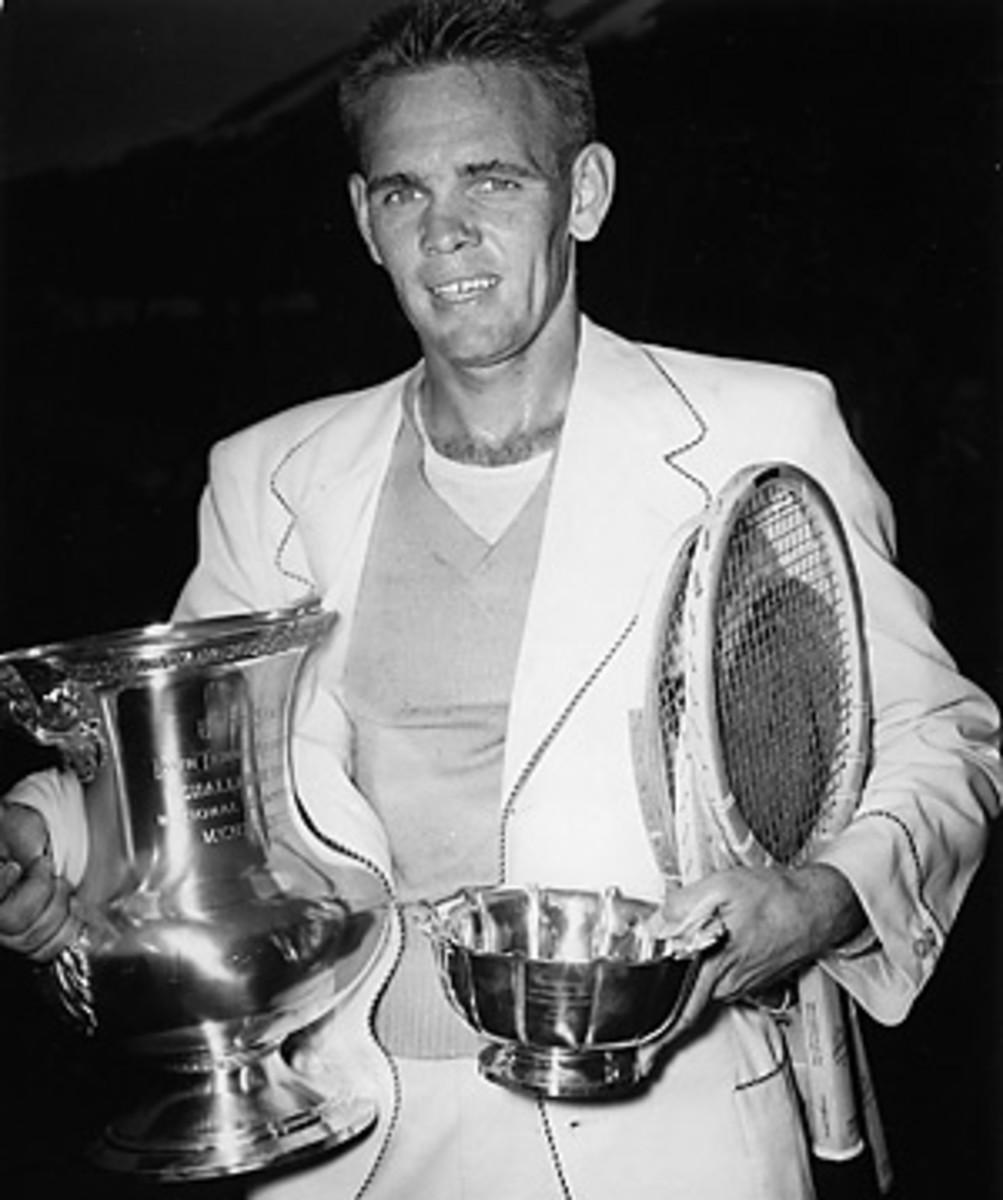Influential Kramer leaves legacy, laughter from the pre-war era


Without any second thoughts, I would say that Jack Kramer was the single most significant figure in the history of his game, tennis.
He died Sunday at the age of 88. He was a player, a champion, an innovator, a promoter, an executive, a labor leader. On top of that , the most popular tennis racket ever sold was named for him -- the Wilson Jack Kramer Autograph, which virtually dominated the business, selling thirty million, from 1947 until wooden rackets went out of fashion. And finally, because everything in tennis just seemed to stick to Kramer for about forty years, he can also be credited with causing the creation of women's professional tennis. Well, sort of. In a minute . . .
Friends called him Big Jake. The Jake wasn't an offshoot of Jack, but it came from cards, where jacks are called "jakes." From an early age, Kramer was a gambler; the hustler was part of him. He was born in Las Vegas (in 1921). His father was a railroad man. Young Kramer certainly didn't come from privilege. He was one of that generation or two of California kids -- Vines, Budge, Wills, Marble, Riggs, Schroeder, King -- who came off the public courts to dominate tennis in the world. In fact, American tennis has never been the same since that well dried up.
Kramer would surely have been a champion before he won the U.S. Nationals (forerunner of the Open) in 1946 -- and then Wimbledon and the Nationals again in '47 -- but he lost many of his best years serving in the Pacific in the Coast Guard during the World War II. When he did return after the war, he changed the major strategy of the sport by winning with what was called "the big game" -- consistent, overpowering serve and volley. Then, in those disgraceful years of "shamateurism," where players stayed amateur in order to compete in the major tournaments by taking money under the table, Kramer turned pro. He whipped Bobby Riggs on his debut tour, then Pancho Gonzales and Frank Sedgman. After that, in his mid-thirties, with no fields left to conquer, he stopped playing, but by then he was already running the pro tour he dominated. He was tennis' major impressario for two decades.
In 1972, after tennis had finally become an honest professional game, Kramer became the first Executive Director of the player's union, the Association of Tennis Professionals. The following year, when the ATP had a dispute with Wimbledon, Kramer, who was beloved in England, an announcer at Wimbledon for the BBC, became the prime villain. When the ATP boycotted, Kramer lost his BBC role and became a Wimbledon outcast. The ATP, meanwhile, grew and prospered.
Kramer was, ultimately, a businessmen. He hired Gorgeous Gussy Moran, she of the scandalous lace panties, to serve as part of a warm-up match on one of his tours, but that was more for her beauty than her strokes. Generally, Big Jake simply didn't believe that "the dames" sold at the box office nearly as well as "the kids," and when, in 1970, a tournament Kramer ran, the Pacific Southwest, only allotted $7,500 of the $50,000 purse to the women, Billie Jean King led a walk-out which led directly to the Virginia Slims Tour and then to the creation of the Women's Tennis Association. When Billie Jean played Riggs a couple years later in the Battle of the Sexes, she literally threatened to call the whole thing off at the eleventh hour unless ABC removed Big Jake from the broadcast booth. Kramer took his leave so the show could go on.
Kramer was a charming fellow, full of wonderful stories about the days when tennis was a gentleman's game on the surface and a lot of con and deceit underneath. He knew everyone who was alive in the game for half a century or more, and also where most of the bodies were buried. His first major appearance was in the 1939 Davis Cup Challenge, which the United States lost to Australia. Now, with Kramer's death, the only other significant athlete from the pre-war era who is still living is Bob Feller, the baseball pitcher.
